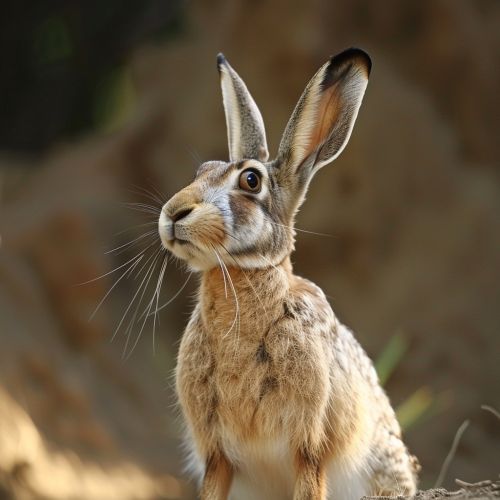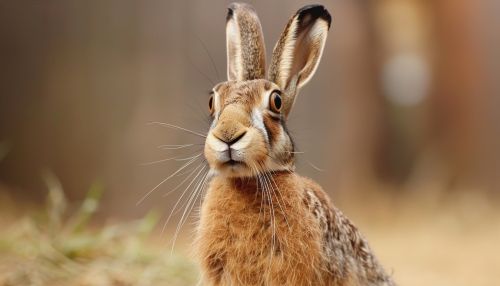Types of Hares
Introduction
Hares are a group of leporid mammals that belong to the genus Lepus. They are similar to rabbits, but are generally larger and have longer legs and ears. Hares are known for their fast running speed, which they use to evade predators. There are approximately 32 species of hares worldwide, each with its own unique characteristics and adaptations to their specific habitats.


Physical Characteristics
Hares have a robust body, long hind legs, and large, flexible ears. Their fur color varies from species to species, but is generally brown, gray, or white. Hares have a keen sense of hearing, which helps them detect predators. Their large hind legs allow them to run at high speeds, which is their primary defense mechanism. The average size of a hare varies depending on the species, but they typically weigh between 3 to 5 kilograms and can reach lengths of up to 70 centimeters.
Behavior and Life Cycle
Hares are primarily nocturnal and solitary animals, although they can be seen in the daytime. They are known for their unique behavior known as "boxing", where two hares stand on their hind legs and strike each other with their paws. This behavior is usually seen during the breeding season, which takes place in the spring.
Hares have a gestation period of around 42 days, after which the female gives birth to a litter of 1 to 8 leverets. Unlike rabbits, hares are born fully furred and with their eyes open. The mother leaves the leverets alone for most of the day, returning only to nurse them. The leverets become independent after about a month.
Diet
Hares are herbivores, feeding on a variety of vegetation including grasses, herbs, and shrubs. In the winter, they may also eat twigs, bark, and buds. Some species of hares, such as the Snowshoe Hare, change their diet seasonally to adapt to the availability of food.
Types of Hares
European Hare
The European Hare (Lepus europaeus) is one of the largest hare species and is native to Europe and parts of Asia. It is known for its long, black-tipped ears and powerful hind legs. The European Hare can reach speeds of up to 70 km/h when escaping from predators.
Snowshoe Hare
The Snowshoe Hare (Lepus americanus) is a North American species known for its large hind feet, which help it move in the snow. Its fur changes color from brown in the summer to white in the winter, providing camouflage against the snow.
Jackrabbit
Jackrabbits are actually a type of hare, despite their name. They are native to North America and are known for their long ears and powerful hind legs. There are several species of jackrabbits, including the Black-tailed Jackrabbit (Lepus californicus) and the White-tailed Jackrabbit (Lepus townsendii).
Arctic Hare
The Arctic Hare (Lepus arcticus) is adapted to live in the harsh conditions of the Arctic. It has a thick coat of fur that changes color from brown in the summer to white in the winter, and large, furry feet that help it move on the snow.
Conservation Status
The conservation status of hares varies by species. Some, like the European Hare, are listed as Least Concern by the IUCN, while others, like the Hispid Hare, are Critically Endangered. Threats to hares include habitat loss, hunting, and disease.
